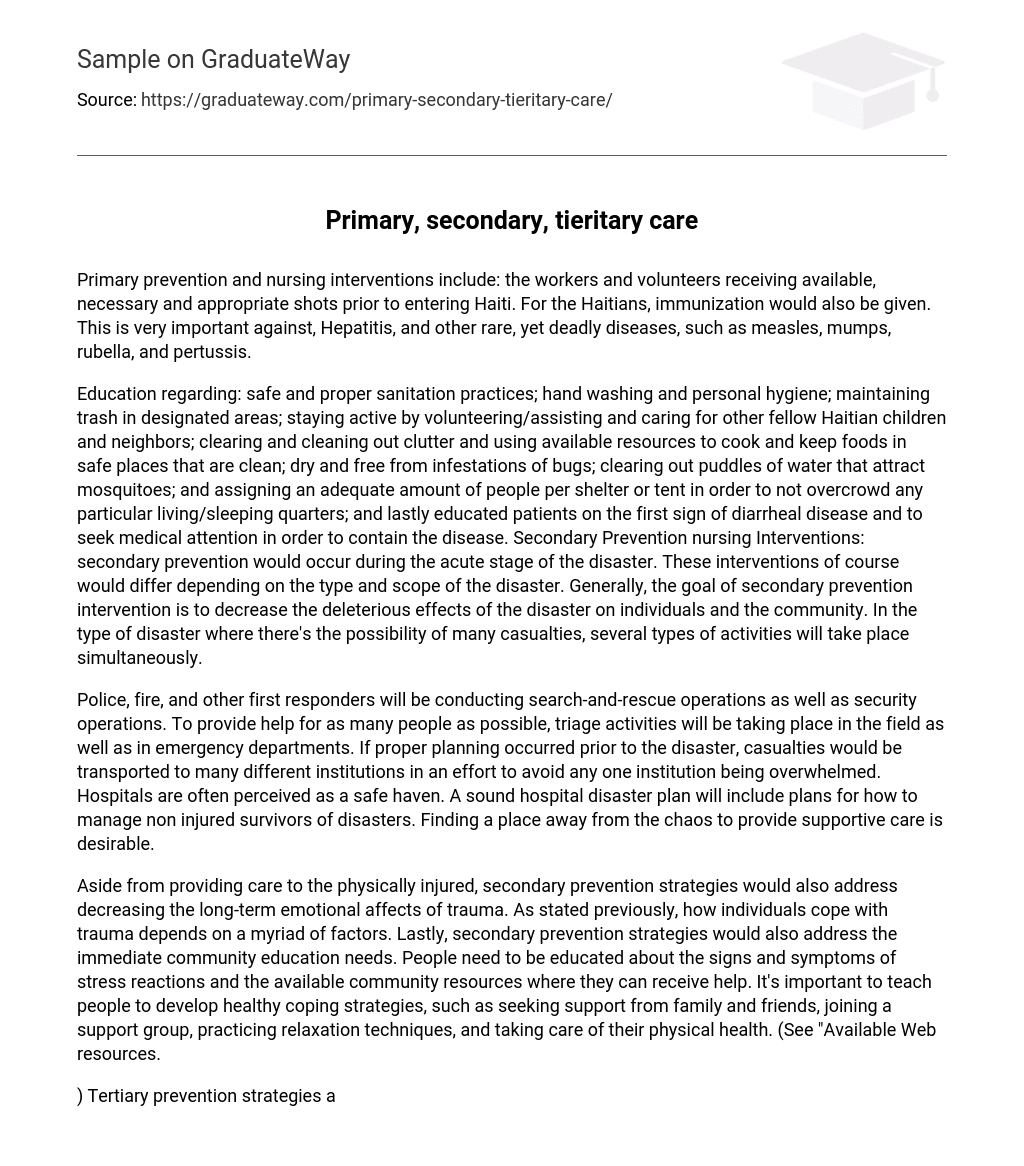Both workers and volunteers in Haiti should receive necessary shots before entering the country to prevent diseases such as Hepatitis, measles, mumps, rubella, and pertussis. Immunization is also crucial for Haitians to protect them against these rare but deadly diseases.
The focus of education is on teaching safe and proper sanitation practices, such as hand washing and personal hygiene. It is emphasized that individuals should keep trash in designated areas and actively volunteer to help Haitian children and neighbors. Education also highlights the importance of decluttering, cleaning spaces, and using available resources to cook and store food in safe, clean, dry locations without bug infestations. To prevent mosquitoes from being attracted, any water puddles should be cleared promptly. Additionally, each shelter or tent should have the appropriate number of occupants assigned to prevent overcrowding. Patients are also educated about recognizing early signs of diarrheal disease and advised to seek medical attention without delay.
During the acute stage of a disaster, nursing interventions for secondary prevention aim to minimize its negative impact on individuals and the community. The specific interventions implemented will vary depending on the type and magnitude of the disaster at hand. In situations where there is potential for numerous casualties, multiple activities will be carried out simultaneously.
Police, fire, and other first responders will be conducting search-and-rescue operations and implementing security measures. Triage activities will occur in both field settings and emergency departments to assist as many people as possible. A well-designed pre-disaster plan would involve dispersing casualties among various institutions to avoid overwhelming a single facility. Generally, hospitals are regarded as safe locations. A comprehensive hospital disaster plan should include strategies for managing non-injured survivors of disasters. It is preferable to locate a calm area amidst the chaotic situation for providing supportive care.
Secondary prevention strategies not only address the physical care of the injured, but also aim to reduce the long-term emotional effects of trauma. The way individuals cope with trauma can differ due to various factors. These strategies also encompass meeting the immediate educational needs of the community. It is vital to educate people about stress reaction signs and symptoms, as well as inform them about available community resources for assistance. Teaching individuals how to develop healthy coping mechanisms, such as seeking support from loved ones or participating in support groups, practicing relaxation techniques, and maintaining their physical well-being, is crucial (refer to “Available Web resources”).
Tertiary prevention strategies aim to address the long-term needs of individuals and the community following the resolution of a disaster. The extent and nature of the required tertiary services will be influenced by the specific disaster. A portion of the affected population will require long-term services. Experts recommend implementing comprehensive treatment strategies that encompass individual, group, and family therapy, effective use of medications, and both short-term and extended hospitalization and rehabilitation. Additionally, fostering healing through programs that facilitate open communication and discussion of emotions is crucial in tertiary interventions.
Providing educational programs is crucial to educate individuals about stress reactions. These programs should cover both normal and abnormal coping mechanisms, as well as when and how to seek help. Support for parents can be offered through these programs to help them assist their children and recognize signs of stress reactions. It is important to implement prevention interventions throughout the entire process, including the Mitigation, Preparedness, Response, and Recovery phases. To achieve this objective, collaboration with organizations such as the CDC (Center for Disease Control and Prevention), the Red Cross, and FEMA (Federal Emergency Management Agency) would be essential. Additionally, reaching out to charitable entities like catholic charities could provide further assistance.





